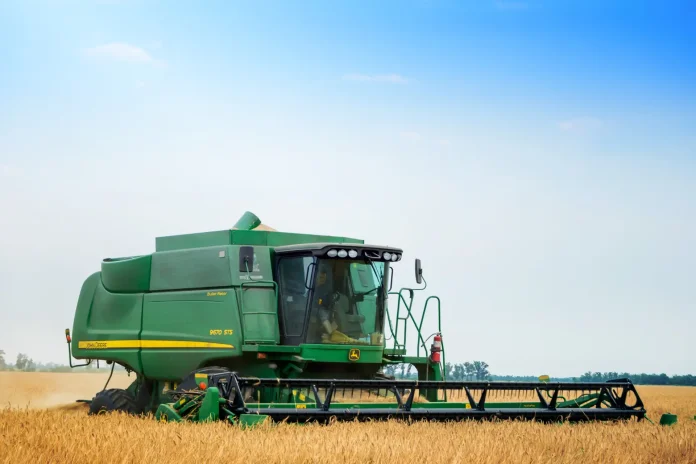A John Deere tractor can move effortlessly across a sprawling field, guided by not a farmer’s hand but with the accuracy of satellite technology. No longer controlled by the limitations of terrestrial networks, the future of self driving tractors is bright as it operates smoothly, every move coordinated from miles away. This futuristic vision may soon become a reality, thanks to a groundbreaking partnership between top agricultural company John Deere and the top spacefaring company SpaceX.
SpaceX’s Starlink Meets the Farm
The key to unlocking the future of self driving tractors lies in a small but mighty device: the ruggedized Starlink terminal. Roughly the size of a pizza box, this satellite dish is full of potential, bringing the high-performance capabilities of SpaceX’s constellation to even the most remote corners of the agricultural landscape. Michael Kool, a senior product manager at John Deere, explains that this terminal will be the main link between farm machinery and the digital world, enabling tractors to operate with the same level of autonomy as their cellular-connected counterparts.
Future of Self Driving Tractors
While self-driving tractors within controlled environments are already a reality, true autonomy comes with real-time connectivity. This is where the Starlink terminal comes in. Imagine a farmer monitoring their tractors from a distance, starting and stopping them via an app, receiving real-time data on their performance, and making informed decisions based on on-the-ground insights. This remote control and data analysis level becomes the backbone of efficient, optimized farming operations.
Expanding the Connectivity from 4G to Startlink
Before this partnership, John Deere relied on 4G modems to connect its machines, enabling essential data sharing and remote diagnostics. However, the limitations of terrestrial networks often left vast areas of agricultural land in the dark ages. By utilizing Starlink’s satellite technology, John Deere is taking a step forward, ensuring smooth connectivity no matter how far off the field may be.
John Deere and SpaceX Collab
The John Deere-SpaceX partnership didn’t come about by chance. In September 2022, John Deere called the space industry, seeking solutions to expand its connectivity offerings. While details about potential competitors remain hidden, it’s clear that SpaceX’s proven track record and innovative technology made it the ideal partner for this venture.
While the potential of Starlink-powered tractors is undeniable, both companies are cautiously moving forward. Strong testing will be conducted to ensure the new terminal can withstand the harsh realities of the agricultural environment – from burning sun and dust storms to severe downpours and freezing temperatures. Only after these tests are completed can the future of autonomous farming genuinely take flight.
Launch Date and Implications
The official launch of the Starlink-enabled farming connectivity service is scheduled for the second half of 2024, initially focusing on the United States and Brazil. While pricing specifics haven’t been revealed, existing Starlink hardware for enterprise users offers a hint, with equipment costing around $2,500 and monthly subscription plans starting at $250.
The implications of this partnership extend far beyond individual farm operations. This collaboration has the potential to revolutionize the entire agricultural landscape, leading to increased efficiency, improved yield, and more sustainable farming practices using AI. Imagine a world where real-time data analysis guides fertilizer application, optimizes water usage, and predicts potential crop diseases before they even take hold. This is the future that John Deere and SpaceX are working towards, planting the seeds for a connected, data-driven, and ultimately more sustainable agricultural future.
While the initial focus is on the future of self driving tractors, the connection of this partnership could reach far beyond the agricultural sector. The ruggedized Starlink terminal may one day find its way onto other heavy machinery, construction equipment, and even emergency response vehicles, pushing the boundaries of connectivity and autonomy in diverse industries.



